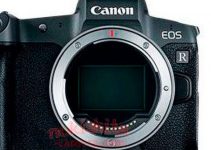If there was a faster way to get cinematic colors in your editing you would want to know, right? One way to do that in DaVinci Resolve is by making use of the LAB color space.
It is a lesser-used color space in video editing and can get highly technical if you decide to jump into the deep end of LAB. Fortunately, there is a quick trick for getting a great grade.
Brought to us by Alex Jordan, the founder of Learn Color Grading and Film Simplified, there is a way to easily integrate a LAB color space technique in DaVinci Resolve 16 to get a cinematic looking image with good color contrast.
Keep in mind, this is a tip on how to easily get a cinematic grade using the LAB color space, not going in-depth of what exactly the LAB color space is.
This is good because it is easy for anyone to pick up and integrate into their existing workflow. No need to relearn an entire workflow just for this.
Jordan jumps right in with his tutorial, taking some sample footage, heading to the Color tab in Resolve 16, and then white balancing the image in the first node. This gives us a good baseline to get started and is a good idea in general.
Next, you will want to add two serial nodes. Select the final node and in the Primaries open the secondary controls. He then brings the highlights all the way down.
Do what you think is best for your footage, because he is doing an exaggerated effect to make the changes more visible in the tutorial.
After you do that you will open up the middle node, or second node if you were following along. Right-click on that node, go to color space, and select “Lab (CIE)” from the dropdown list. It shouldn’t impact your image at all.
What makes LAB unique is how it handles color in relation to brightness changes. When you increase brightness the image becomes more red and when it decreases it becomes blue.
This is the same for all the color wheels, whether you are changing lift, gamma, or gain. You might’ve guessed that this will make it super easy to change the shadows to blue and the highlights to red, creating a strong color contrast.
Jordan doesn’t even have to touch the color wheels to do this. Using the Shadows and Highlights controls you can quickly make the shadows blue and highlights red. It very quickly gives the image a nice saturation and color contrast since the image goes from blue to red.
You can always create this look in another way, but it is a good trick to have in your tool bag to do a quick grade when you need it. Think you’ll try it out?
[source: Learn Color Grading]
Disclaimer: As an Amazon Associate partner and participant in B&H and Adorama Affiliate programmes, we earn a small comission from each purchase made through the affiliate links listed above at no additional cost to you.
Claim your copy of DAVINCI RESOLVE - SIMPLIFIED COURSE with 50% off! Get Instant Access!



